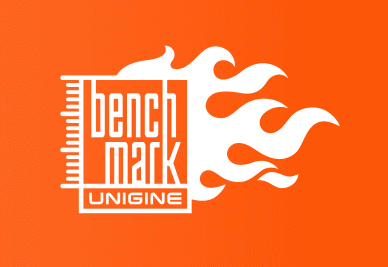In perusing the thread .... some things for now and some things for the next build.
1. Look at this thread for info on selecting appropriate radiator size. You can download a simple spreadsheet based radiator size calculator which is based upon test data from MartinsLiquidLab.
A few peeps have asked me to provide this info in an easily accessible / findable spot so the don't have to remember what thread it is in or take snippets from multiple threads. If ya find it useful, great .... if ya like something better, by all means use what ya comfy with. First off, I did...

www.overclock.net
CPU = 180 watts
GPU = 360 watts
So with a total theoretical maximum water cooling load of 540 watts ... Accounting for the fact that peaks are intermittent, much heat is surface radiated, we'd be looking at a radiator load of about 60% of the theoretical max or 324 watts
With 1250 rpm fans, a medium thickness rad should deliver about 183 watts of cooling. The 280 about 166 with just one set of fans in push blowing into the case ... If you use as exhaust, you will have to de-rate that performance. That totals 349 watts which should give you a Delta T of about 9.23 C. Your radator shrouds, tubing, fittings and the blocks themselves will all radiate heat.
2. I generally recommend rads with the following features:
a) Two bottom ports
b) Two top ports
c) Two side ports (not critical)
d) Drain port
e) Screw protectors
In the pic above it's about 50mm to the bottom of the case grille. I used a a MxM adapter and a 400mm FxF extension and cap to extend the port from one the top rad ports w/ cap to just below the case grille. This makes an ideal fill port. Build a portable extension to use when filling the system ... with a 12" rigid acrylic tube, MxM fitting, (2) tube adapters, and valve, Take the screw cap cap off, attach your fill tube placing funnel in top of valve until system appears full and the acrylic tube is about 85% full. Close the valve and run the system.
As the system runs, the level in the tube will drop and air will collect on its place.... 'Rinse and repeat refilling the tube a few times closing the valve and running till all coolant is gone from the rier tube .... Tilting the case as needed.
2. As for the bottom drain, the above pic is one design we incorporate often. Of course, both these things no workie if you only have 2 ports. To what you see, I add an extension a Quik-Disconnect fitting, the other half of which is on a 36" flex tube for draining into a bucket.
Those side ports can be used for temp probes measuring the in and out temps at each rad ... Can display those on a Reeven 6 eyes.
3. For the reservoir, recommend a 3 port top. One is used as fill tube which extends below the water line, preventing splashing which make the coolant absorb air. Another port make a convenient bleed port to adjust water level.... Leave about 15% of res height unfilled.
4. As to the temp question ... CLCs generally operate at about a Delta T of 20C, you will be under 10C. The custom loop will make the H115i look like a toy ... And with far, far less noise... Your system should never break 850 rpm. With SLI systems and close to 600 watts of GPU power, a good block should deliver temps in the 30s at 1250 rpm... I would run mine at 800 or so rpm and GPU temps would be 42-44C/ CPU would get into mid to high 70s under ROG Real Bench. That box hit 50s - mid 60s in gaming. If you are sitting in front of the box in those pics, you can not tell the system is running a stress test ... it's completely inaudible and that box had twin 300 watt GFX cards. Compare that with the Cosair AIOs which are 50-60 dbA ... that's 6 - 8 times as loud.
5. Prime95 and other synthetics will reduce your potential OC as it will cause temps that the system will never see. Kinda like testing your SUV to see if it can tow your SeaDoo to the shore 8 miles away by testing by towing a flatbed up the rocky mountains. And since RB is a multitasking stress test I find that 24 hour stable OCcs are unstable under the last RB test. P95 is a great tool for rapidly cycling temps up into the 80s and back down to room temps to cure your TIM.
6. See fill procedure for getting rid of entrapped air back in item 1
7. Unless you go all out gorilla w/ the screwdriver, the EK blocks should prevent you from over tightening... you are looking for about 70 pounds of clamping force
8. No, there is no way to make the coolant cooler w/o chilling it. You never want your coolant temp ever to be lower than ambient air. This causes condensation.
9. Happy to see your are using RoG RB .... I am surprised that you are not seeing the typical Intel voltage bump of about 0.13 when AVX instrutions are present
 . The Nvidia boost scales every step with 15 MHz up or down. If you have for example 2100 MHz gpu clock with 68 degrees you will achieve easily 2130 to 2145 if you can settle it as about 50-55 degrees. Sure that's not that much but a few fps more in games or better values in benchmarks.
. The Nvidia boost scales every step with 15 MHz up or down. If you have for example 2100 MHz gpu clock with 68 degrees you will achieve easily 2130 to 2145 if you can settle it as about 50-55 degrees. Sure that's not that much but a few fps more in games or better values in benchmarks.




